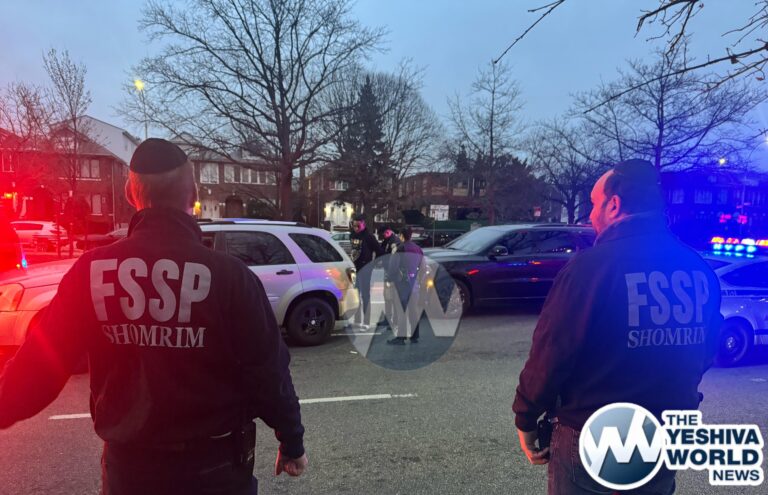 Saying the city is “fully prepared” for whatever happens this fall, Mayor Michael Bloomberg and top officials outlined the city’s plans to combat the H1N1/swine flu.
Saying the city is “fully prepared” for whatever happens this fall, Mayor Michael Bloomberg and top officials outlined the city’s plans to combat the H1N1/swine flu.
The mayor, along with Health Commissioner Thomas Farley, Health and Human Services Deputy Mayor Linda Gibbs, Office of Emergency Management Commissioner Joe Bruno, and Schools Chancellor Joel Klein, held a briefing today to discuss how the city will handle a possible fall resurgence of the virus.
According to Bloomberg, 15 agencies met together this summer to analyze data from last spring’s emergence of the virus and to come up with a “proactive, far-reaching” contingency plan.
“We can’t predict this year’s flu season, but we can make sure that city government is fully prepared for whatever happens,” Bloomberg said.
Health officials predict that the virus will be a bigger threat to younger people, rather than older people, and that large majority of patients will not have to be hospitalized. Last spring, 54 deaths were identified from the disease – a small fraction of those who were infected.
The plan presented by officials today has four main initiatives: communication, prevention, open-school policy, and hospital policy.
Bloomberg said this fall, the city will offer comprehensive daily updates on the number of those who visit the hospitals with flu-like symptoms, deaths, and school absentee rates. All of this information will be posted on a new web portal, www.nyc.gov/flu, which will launch later this month.
There will also be weekly updates for school principals on the virus and letters will be backpacked home on the new policies at the start of the school year.
The second part of the plan focuses on prevention. Bloomberg said in addition to reminding New Yorkers of common sense prevention methods like hand washing, the city will offer free vaccines to all public and private school children. It will be up to parents to decide whether the vaccination is appropriate for their children.
“The vaccine for the new H1N1 virus has been developed. It’s undergoing safety testing right now,” said Farley. “We have expected it’s going to pass that and will be available in mid- to late-October. When it’s available, we’ll be making it available through medical providers, but we’ll be talking about special ways to make it easier for parents to receive it through the Health Department.”
Clinics and H1N1 vaccine sites will also offer the vaccine for those at risk for severe disease.
Along with the specialized H1N1 vaccine, a seasonal flu shot will also be available for the public.
Another major change in policy announced this afternoon is the open-school policy, which was proposed by federal health officials earlier this summer.
The schools chancellor said the Department of Education now knows enough about the virus that it can effectively manage it and keep schools open. Moreover, Health Commissioner Farley said since many students came down with H1N1 last year, it is likely that they are now immune to the virus.
“By getting your children vaccinated, keeping them home when they’re sick, and teaching them the importance of washing hands and covering coughs, you can help keep our schools open and safe this year,” said Joel Klein, the schools chancellor.
Signs, posters, and classroom instruction will remind students of these influenza-protection techniques.
The flu scare last spring forced a spate of public and private school closings across the five boroughs.
Finally, officials from the city’s Health and Hospital Corporation and the mayor stressed the importance of getting care to those who need it most. Bloomberg said the last outbreak was a “very heavy burden” on the hospital system. As a result, it is instituting some new policies they hope will help get the best care to everyone.
Among the new programs planned is the transformation of some HHC-run community health clinics to flu centers, where patients can get flu mists and/or treatments, clearing the hospitals for those with other urgent needs. The city is also considering partitioning off special areas of hospitals for those with flu – preventing the spread of the illness and freeing up space for other emergency room patients.
Another plan in the works is the creation of a call center where New Yorkers can speak to nurses about their symptoms and gain guidance over their condition.
The city has also created protocols to prepare volunteer health professions and secure continuous access to emergency medical supplies if needed.
The announcement comes as new estimates show about 800,000 city residents or about 1 in 10 New Yorkers may have contracted the H1N1 virus this past spring.
Health officials say most cases have been mild.
“The vast majority don’t get severely ill, don’t need to be hospitalized, and those who get severely ill, need to be hospitalized or may die, tend to be, not always, but tend to be, those with underlying health conditions,” Centers for Disease Control Director Dr. Thomas Frieden, the former city health commissioner.
The virus was blamed for dozens of deaths.
In another attempt to educate the public about H1N1 prevention, some residents of Sesame Street are launching a public service campaign.
Sesame Workshop has partnered up with the Department of Health and Human Services, the Department of Homeland Security, and the Department of Education to produce a campaign to educate kids healthy habits. They include reminding kids to wash their hands, sneeze into their arms, and avoid contact with their eyes, nose and mouth.
The announcements will be distributed nationwide.
(Source: NY1)










